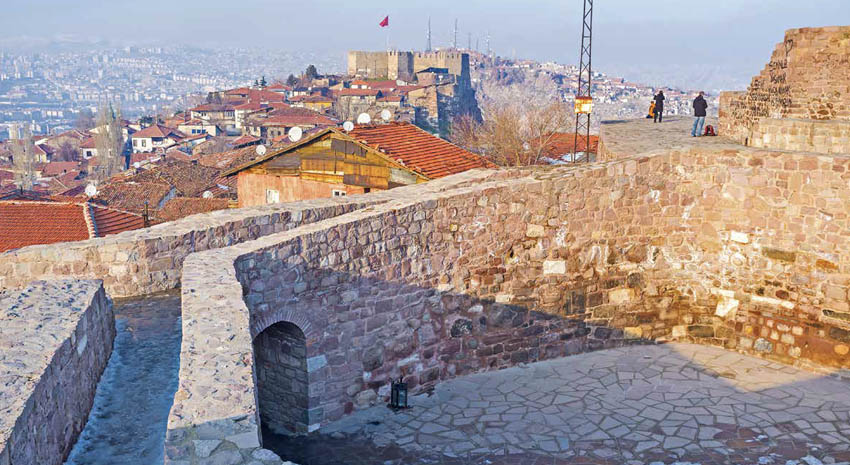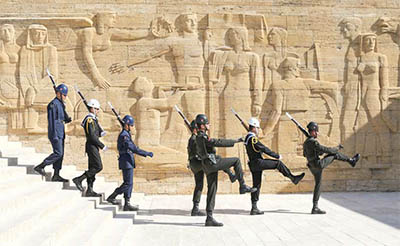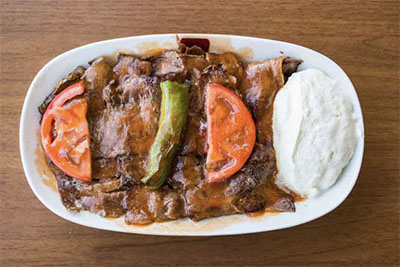January 2018, Turkey

Photo: View of the Citadel © EVGENIY FESENKO | DREAMSTIME
THE LAND OF WHIRLING DERVISHES, the Trojan horse, the underground cities of Cappadocia and the charismatic founding statesman Kemal Atatürk, Turkey is rich in culture and lore. While İstanbul, lively and cosmopolitan, straddles Asia and Europe, it is Ankara that embodies a sense of the country’s ancient and modern history.
Turkey’s second-largest city offers a range of opportunities for you and your traveling companions to immerse in authentic lore: the State Opera and Ballet; the Presidential Symphony Orchestra; and an array of museums focused on topics from artillery and aviation to meteorology and land surveying, postal services and telecommunications. But three specific attractions present a real sense of Turkish tradition: the Old Town clustered around the ancient Citadel, the Museum of Anatolian Civilizations, and the enormous hilltop Anıt Kabir mausoleum of the country’s larger-than-life founder, Mustafa Kemal Atatürk.
While modern office buildings and trendy boutiques and cafés prosper in the Çanikaya and Kavaklidere districts, sightseers can head toward Ulus, the older part of the city. Dating back to the seventh-century Byzantine age and overbuilt on 3,000-year-old Hittite ruins, the imposing pentagon-shaped Citadel (Hisar) serves as an ongoing symbol of the town. Incorporated into its inner and outer rampart walls, stones with traces of Greek and Roman script indicate the fortification may have been built in haste 10 centuries ago to protect the city against Arab invaders. Entering through the Finger Gate (Parmak Kapısı) and heading straight ahead toward the center, up a steep slope you come upon the Eastern Tower (Şark Kulesi). Climb this newly restored favorite spot for kite flyers to get panoramic views. Nearby Alâeddin Camii is the city’s oldest mosque, with an attractive arched exterior.
Within the ramparts lies the picturesque Old Town (Haamonii) of winding cobbled streets. While gentrification gradually supplants its ramshackle charm, the neighborhood retains the atmosphere of a traditional Turkish village, with women sorting skeins of wool and patrons sipping coffee at streetside cafés. Elaborate Ottoman mansions have been converted into restaurants, coffee shops and boutiques. In Art Street, shoppers can browse at the handicrafts market where local women sell rough leather handbags, colorful crocheted blankets, vivid patterned carpets and elaborately embroidered handkerchiefs. You can visit the interior of one of the typical houses; the home of famous Turkish poet Mehmet Akif Ersoy, located not far from his statue stationed in the middle of the central square, has been converted to a museum and archives.
Also nearby, in a restored 15th-century covered market, or bedesten, stands the acclaimed Museum of Anatolian Civilizations. Exhibits displayed in chronological order and with English captions trace the history of every major civilization that played out in this region, such as Paleolithic bone fragments and primitive stone tools, Neolithic mother goddess statues, Hittite stag sculptures and Roman coins. The remains of a 9.8 million-year-old monkey discovered here — named Ankarapithecus after the city — testify to the region’s importance since prehistoric times.
In contrast to the ancient artifacts, an imposing mausoleum honors the “Father of the Motherland,” the country’s iconic founder. Kemal Atatürk first rose to prominence during the War of Independence. After organizing resistance and winning battles that expelled Greek forces, the charismatic hero of Gallipoli emerged to create a Turkish nation. Assuming the name Atatürk, meaning “Father Turk,” he set about introducing reforms and creating a modern state. Ankara, at the time a dusty village on the steppes, occupied a secure location. After declaring it the capital, Atatürk developed it into an urban showcase intended to impress the rest of the world. A center of universities and foreign embassies, the city was constructed in the Fascist monumental, symmetrical, cut-stone architectural style exemplified in his colossal memorial, built from 1944 to 1953 and considered the ultimate monument of the era.

SOLDIERS MARCHING IN THE CHANGING OF THE GUARD CEREMONY AT ANIT KABIR © EVREN KALINBACAK | DREAMSTIME
Anıt Kabir sits on a hill within a park planted with trees and flowers donated by countries from around the world. Visitors approach via Lion Road, an 860-foot-long marble promenade lined on both sides with 12 pairs of lions carved in the Hittite style, symbolizing power and peace. The massive Ceremonial Plaza can accommodate 15,000 people on a multicolored travertine marble floor depicting Turkish rug designs. Columns frame steps leading up to the marble tomb, and each of 10 symmetrically arranged towers represents an ideal that influences the nation: independence, peace, victory, reform and the like.
Inside the monument, a museum chronicles the emergence of the Republic and illuminates Atatürk’s life. A section on the 1919–1922 War of Independence contains weapons, documents and panoramic views of the battlefields with three 100-foot-wide wallsized dioramas depicting significant battles. The three-dimensional pictures of flaming fortifications, exploded tanks, barbed-wire barriers and wounded soldiers are enhanced with dramatic sound effects of screams and cannons firing.
You’ll find various aspects of Atatürk’s life and legacy depicted in a series of niches. Along with official treaties and documents, you can view a large collection of Atatürk memorabilia and paraphernalia including his tuxedo, rowing machine and Cadillac car, plus jewel-encrusted swords and gifts from fellow statesmen. A gift shop at the exit sells Atatürk key chains, paperweights, daggers and copies of his books. Turks retain a strong reverence for Atatürk, and as many as a million people a day file through the monument to express their respect.
Every hour on the hour in the main courtyard, visitors crowd around to view an elaborate changing of the guard. Soldiers decked out in metal helmets and military uniforms colorfully wield their rifles in precision maneuvers.

İSKENDER © ALP AKSOY | DREAMSTIME
Cuisine remains an essential facet of the Turkish experience, and Ankara’s Old Town area is rich in restaurants offering local dishes. Kebap skewers are a regional specialty, in particular the popular İskender — chunks of lamb on crumbled bread topped with yogurt, hot tomato sauce and browned butter. High-proof, anise-flavored raki may accompany meals, and candied chestnuts (kestane sekeri) are popular sweets.
Ankara Info to Go
A high-speed railway connects Ankara to İstanbul in around three hours. Infrequent international flights arrive at Ankara Esenboğa International Airport, renovated in 2007 and located 17 miles northeast of downtown, with shuttles transporting arriving passengers into the city center. Two subway lines cross the city at right angles, and much of the town is easily walkable.
Where to Stay in Ankara
ANGORA HOUSE HOTEL Six rooms with carved wooden ceilings, fine linens and attentive service provide charm in this restored 200-year-old traditional Ottoman house in a convenient location at the foot of the Citadel walls. Kale Mahallesi, Kale Kapısı Sokak 16 $$
DIVAN ÇUKURHAN HOTEL An overarching glass roof encloses the grand central lobby of this 5-star boutique hotel offering individually decorated rooms in a restored 16thcentury kevansaray opposite the main entrance to the Citadel. Tarihi Ankara Kalesi, Necatibey Mahallesi Depo Sokak 3 $$
RIXOS GRAND ANKARA HOTEL Locals consider this refined modern hotel with spa, swimming pool, restaurants and convention facilities a must for travelers seeking luxury. Kavaklıdere Mahallesi, Atatürk Blvd.183 $$$
Restaurants in Ankara
KINACIZADE KONAĞI Atatürk himself is said to have stopped by this typical Ottoman house before it became a restaurant serving typical kebaps and savory stuffed crêpes which can be topped off with honey walnut gözleme. Kale Mahallesi, Kale Kapısı Sokak 28 $$$
ULUDAĞ KEBAPÇISI A staircase encircles the multilevel dining rooms where diners seated beneath blue light fixtures sample quintessential İskender kebap in this half-century-old traditional restaurant. Denizciler Cadessi 54, Ulus $$$
ZENGER PAŞA KONAĞI Rustic décor and panoramic city views add atmosphere in this restored 18thcentury mansion serving traditional dishes, with dancing to live Turkish music. Kale Mahallesi, Doyran Sokak 13 $$$
